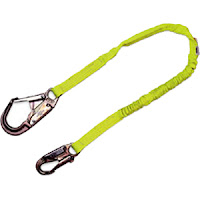The risk assessment process for work at height is not
different for other risk assessment, it is just more focussed. As with all risk
assessments, there is a hierarchy of control that needs to be considered, in
this case it is: avoid, prevent, mitigate.
There should be thought given to ways in avoiding (or at least
minimising) the need for work at height in any workplace, including
construction environments. Where the need for work at height cannot be avoided,
consideration must be given to preventing falls from height (such as by the
provision of safe work platforms with adequate edge protection, or even by the
use of a harness and lanyard arrangement designed to prevent the worker from
reaching the edge from which they can fall (e.g. 2m lanyard anchored 3 m from
the edge). In the event of prevention not being possible, then there should be
consideration of mitigation of the effects of the fall (such as by the use of
safety nets, fall arrest equipment or even air bags).
Perhaps the thing that is
most often missing from a work at height risk assessment (or the accompanying
method statement) is the rescue plan - how to retrieve safely a worker from a
work at height (especially a fall involving fall arrest equipment) situation
should the need arise. Few people are aware of the short period of time (about
15 minutes) in which a suspended, unconscious person should be rescued in to
avoid (potentially fatal) suspension trauma.
Contact us through our website

No comments:
Post a Comment